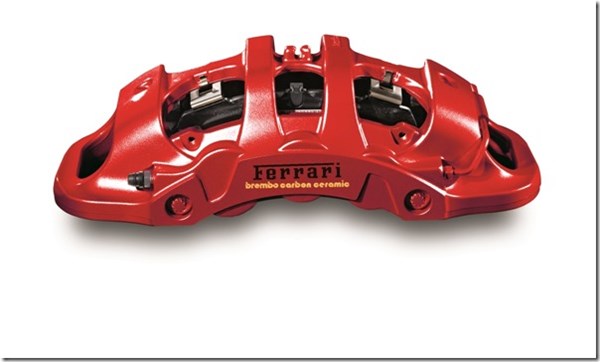Brembo. Yes, We’re Talking Brakes
It’s the classic story of a tinkerer in a garage starting something and then having it go big.
It’s the classic story of a tinkerer in a garage starting something and then having it go big. Really big. Internationally big. So big that even people who don’t know much about the technology know what it is. Or at least recognize it.
It’s a story that started in a small workshop outside of Bergamo, Italy, in 1961. It was called Officine Meccaniche di Sombreno.
The issue was one of securing brake discs when there weren’t many readily available with the right characteristics. That was in 1964.
By 1975, Enzo Ferrari paid a visit to the operation. And the rest is history.
Brembo. Brakes.
Who doesn’t recognize this:

Dan Sanberg is president and CEO of Brembo North America, which is headquartered in Plymouth, Michigan. About an hour-and-a-half west there’s the manufacturing facility in Homer, Michigan, where, Sanberg says, they’re manufacturing discs, calipers, and corner modules. Where they’re investing $100-million for a casting facility. Yes, that’s right: they’re going to be casting iron and aluminum in Michigan.
Brembo is all about premium braking technology. Braking systems for Ferrari, of course, but also cars like the Viper and the Corvette.
Of the company’s 7,700 employees around the world, 10% are hard at it, working on R&D.
And Sanberg points out that because this is an Italian company, aesthetics matter. Yes, there are people back in Italy who look at the calipers from the point of view of strictly their artistic appeal.
Sanberg talks about trends and development in such things as materials and applications, about the challenges and the future of braking systems on this edition of “Autoline After Hours.”
Host John McElroy, Richard Truett of Automotive News, and ask Sanberg about what has got to be the most-storied brake company on the planet (its brakes have been on vehicles—cars and motorcycles—that have won more than 300 championships since the company first went racing—Formula One racing—in ’75.
In addition to which, McElroy, Truett and I discuss a number of other subjects, including the IIHS testing of the Ford F-150, which Automotive News played an important role.

(IIHS photo)
That, the calculations of fuel-cell-generated water, FCA’s earnings and much more are discussed right here:
RELATED CONTENT
-
Aluminum Sheet for EV Battery Enclosure
As the number of electric vehicles (EVs) is about to increase almost exponentially, aluminum supplier Novelis is preparing to provide customers with protective solutions
-
on lots of electric trucks. . .Grand Highlander. . .atomically analyzing additive. . .geometric designs. . .Dodge Hornet. . .
EVs slowdown. . .Ram’s latest in electricity. . .the Grand Highlander is. . .additive at the atomic level. . .advanced—and retro—designs. . .the Dodge Hornet. . .Rimac in reverse. . .
-
On Ford Maverick, Toyota Tundra Hybrid, and GM's Factory Footprint
GM is transforming its approach to the auto market—and its factories. Ford builds a small truck for the urban market. Toyota builds a full-size pickup and uses a hybrid instead of a diesel. And Faurecia thinks that hydrogen is where the industry is going.


.jpg;width=70;height=70;mode=crop)






